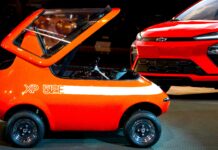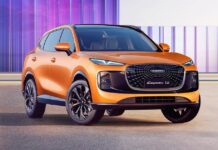Ford’s ambitious electric vehicle journey may face a significant detour. Recent reports suggest that the company is seriously considering discontinuing the F-150 Lightning, its all-electric pickup truck, due to slow sales and production challenges. Initially touted as a potential game-changer for Ford, mirroring the impact of the Model T, the Lightning’s future now appears uncertain.
Production Halt and Supply Chain Disruptions
The situation is complicated by an indefinite production pause initiated in mid-October. This disruption stems from a fire at a key supplier’s aluminum factory in upstate New York. As the F-150 Lightning utilizes aluminum extensively – unlike most full-size trucks – the supplier’s prolonged absence (estimated to last until well into 2026) has forced Ford to prioritize production of its much more profitable gasoline and hybrid F-150 models. The company is shifting employees from the Lightning production line to these higher-demand vehicles.
Sales Performance and Market Dynamics
Ford’s Chief Operating Officer, Kumar Galhotra, has stated that the company will resume Lightning production “whenever we’re ready,” but the possibility of a permanent halt is very real. The timing of these developments is particularly noteworthy because the US federal government’s electric vehicle tax rebate of up to $7,500 ended on September 30th. This rebate spurred a surge in EV purchases, and its removal, combined with a lack of drastic price cuts from Ford, has contributed to the Lightning’s underwhelming sales figures.
Competitive Landscape and Ford’s Strategic Shift
The Lightning’s price point, starting at $54,780 (USD), represents a significant premium over the base gasoline-powered F-150 ($37,450 USD). This discrepancy is proving difficult in a market where EVs, particularly in the higher end, are facing softening demand. Ford’s recent announcement of the Universal EV Platform, with its Ranger-sized electric ute slated for release in 2027 at a starting price of $30,000 (USD), further underscores a strategic pivot. This new platform, potentially named Ranchero, could signal a shift towards more affordable electric trucks in Ford’s lineup.
Industry-Wide Trends and EV Rethink
Ford is not alone in grappling with the realities of the electric pickup market. General Motors is reportedly assessing the future of its Chevrolet Silverado EV, GMC Sierra EV, and GMC Hummer EV. Ram has already cancelled development of its all-electric 1500 REV, opting instead to focus on an extended-range EV version. This trend of reassessing EV strategies reflects broader challenges in the automotive industry, as the initial surge in electric vehicle demand begins to level off, and automakers face the need for greater pricing competitiveness and efficiency.
Australian Market Implications
While Ford Australia currently offers right-hand-drive converted F-150s, the company does not officially import the F-150 Lightning. Queensland-based AusEV has been fulfilling the demand by remanufacturing and selling the Lightning locally. The potential discontinuation of the Lightning would likely impact this niche market, highlighting the complexities of importing and adapting EVs for the Australian landscape.
The shifting landscape of the electric vehicle market is forcing automakers to re-evaluate their strategies, prioritizing profitability and responding to changing consumer preferences. The future of the F-150 Lightning, and the broader electric truck segment, remains uncertain.
The challenges facing the F-150 Lightning highlight the evolving nature of the electric vehicle market and the pressures on automakers to navigate shifting consumer demand, supply chain disruptions, and economic realities. The outcome will shape the future of electric trucks and Ford’s role in the growing EV landscape.

























